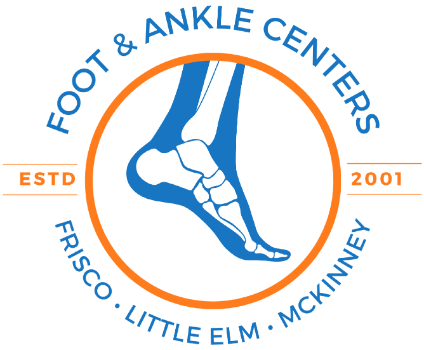Early signs of Morton’s neuroma at Foot and Ankle Centers
Monday, January 20, 2025 | By: Foot & Ankle Centers of Frisco and Plano
Don’t Ignore These Early Signs of Morton’s Neuroma
Do you feel a sharp, burning pain in the ball of your foot? Perhaps it’s accompanied by tingling, numbness, or a sensation like stepping on a pebble. These symptoms could point to Morton’s Neuroma, a painful condition caused by the thickening of a nerve between your toes. Recognizing the early signs is crucial for effective treatment and to prevent the condition from worsening.
At Foot & Ankle Centers, we’re here to help you understand and manage Morton’s Neuroma. Let’s explore the symptoms, causes, and treatment options available to relieve your discomfort and get you back on your feet.
What Is Morton’s Neuroma?
Morton’s Neuroma is a condition that involves the thickening of a nerve in the ball of the foot, typically between the third and fourth toes. This thickening is often a response to irritation or compression, leading to pain and other symptoms. While not technically a tumor, the affected nerve may feel enlarged, contributing to the discomfort.
This condition is more common in women than men and is often linked to lifestyle factors, such as footwear choices, or underlying foot structures that create excess pressure.
Early Warning Signs
Recognizing the early symptoms of Morton’s Neuroma is essential for timely intervention. Key signs to watch for include:
- Tingling or Numbness in Toes: A frequent sensation that may come and go.
- Sharp, Burning Pain: Especially noticeable in the ball of the foot, and it may worsen with physical activity or wearing tight shoes.
- Pebble Sensation: A feeling like there’s a pebble or bunched-up sock underfoot.
- Swelling or Discomfort: Localized around the ball of the foot, often exacerbated by pressure.
If you’re experiencing these symptoms, it’s time to consult a podiatrist. Early diagnosis and treatment can prevent the condition from advancing.
Causes and Risk Factors
Morton’s Neuroma develops due to irritation, compression, or trauma to the nerve in the foot. Common causes and risk factors include:
- Improper Footwear: High heels or tight shoes that squeeze the toes can increase pressure on the nerves.
- Repetitive Activities: Sports or activities that involve running or jumping can exacerbate nerve irritation.
- Foot Structure: Conditions like flat feet, high arches, or bunions may contribute to uneven pressure on the foot.
- Injury: Trauma to the ball of the foot can trigger nerve thickening.
Understanding the underlying cause can help guide treatment and prevent future occurrences.
Diagnosis: What to Expect
When you visit Foot & Ankle Centers, our podiatrists will perform a thorough evaluation to diagnose Morton’s Neuroma. This typically includes:
- Physical Examination: Checking for tenderness, swelling, or other abnormalities in the foot.
- Imaging Tests: X-rays, ultrasounds, or MRIs may be used to rule out other conditions, such as fractures or arthritis.
- Symptom History: Discussing when and how symptoms occur to better understand the issue.
An accurate diagnosis ensures that you receive the most effective treatment for your specific needs.
Treatment Options for Morton’s Neuroma
At Foot & Ankle Centers, we offer a range of treatments to alleviate symptoms and address the underlying causes of Morton’s Neuroma. Treatment options include:
Non-Surgical Treatments
-
Custom Orthotics
- Specially designed shoe inserts to relieve pressure on the affected nerve and improve foot alignment.
-
Footwear Modifications
- Switching to wider, low-heeled shoes with ample toe space to reduce nerve compression.
-
Padding and Taping
- Techniques to redistribute pressure and provide immediate relief.
-
Anti-Inflammatory Medications
- Over-the-counter or prescribed medications to reduce swelling and pain.
-
Cortisone Injections
- These injections target inflammation directly, offering significant pain relief.
-
Physical Therapy
- Exercises and stretches to alleviate pain and improve foot mechanics.
Surgical Intervention
For severe cases that don’t respond to conservative treatments, surgery may be recommended. This involves removing the thickened nerve or releasing the surrounding tissue to relieve pressure. Most patients experience significant symptom relief following the procedure.
Preventing Morton’s Neuroma
While some risk factors, such as foot structure, can’t be avoided, there are steps you can take to reduce your risk:
- Wear Supportive Footwear: Choose shoes with adequate arch support, cushioning, and a wide toe box.
- Avoid High Heels: Limit wearing high-heeled shoes that put extra pressure on the ball of your foot.
- Take Breaks During Activities: Avoid prolonged periods of high-impact activities without rest.
- Maintain a Healthy Weight: Reducing body weight can decrease overall foot pressure.
Preventative measures can go a long way in preserving foot health and preventing nerve issues.
Take Action Today
If you’re experiencing symptoms of Morton’s Neuroma, don’t wait for the pain to worsen. Early intervention can make a significant difference in your recovery and overall comfort.
At Foot & Ankle Centers, our expert podiatrists are dedicated to providing personalized care to help you find relief. Contact us today to schedule an appointment and take the first step toward healthier, pain-free feet.


0 Comments